Scarce space in our cities, excessive car dependency, and outdated parking norms — unfortunately, these remain a reality in most places around the world. Luckily, a growing number of policymakers, housing developers, researchers, and mobility providers are dreaming of ways to change this, and taking action!
To turn our dreams into reality, SHARE-North Squared joined researchers from the DREAMS project and policymakers from the City of Utrecht for a day of knowledge exchange.
At our joint symposium, Living on the Edge, we explored how to effectively integrate shared mobility into housing developments (the specialty of the SN²-team) and urban outskirts (the focus of the DREAMS-team).
Meet us at the Paushuize
The teams gathered in the morning at the iconic Paushuize, located in the heart of Utrecht. Built in the early 16th century, Paushuize was intended as the residence of Adrianus VI, the only Dutch pope. Unfortunately, due to his early death, he never lived in his ‘house’.
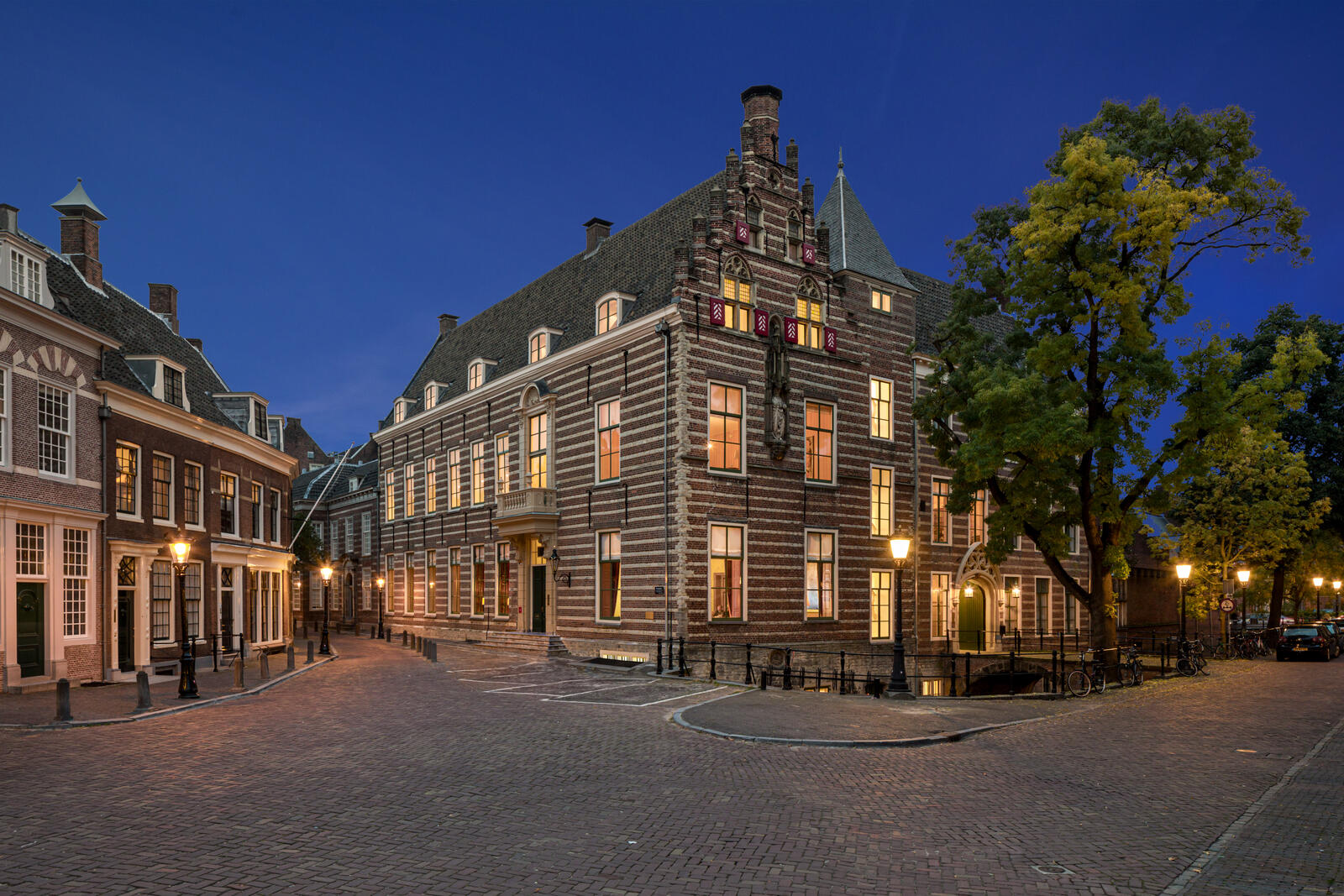
The 'Paushuize' was built for Pope Adrianus VI (Picture from Paushuize.nl).
In this historic setting, the SN² and DREAMS teams got down to business.
After a brief round of introductions, Esther De Reys presented the Replacement Ratio Tool that is being developed for Flanders by Way To Go. This tool calculates how many private vehicles can be replaced by a single shared car. It will be customised for specific projects, allowing planners to determine the replacement ratio for each individual project.
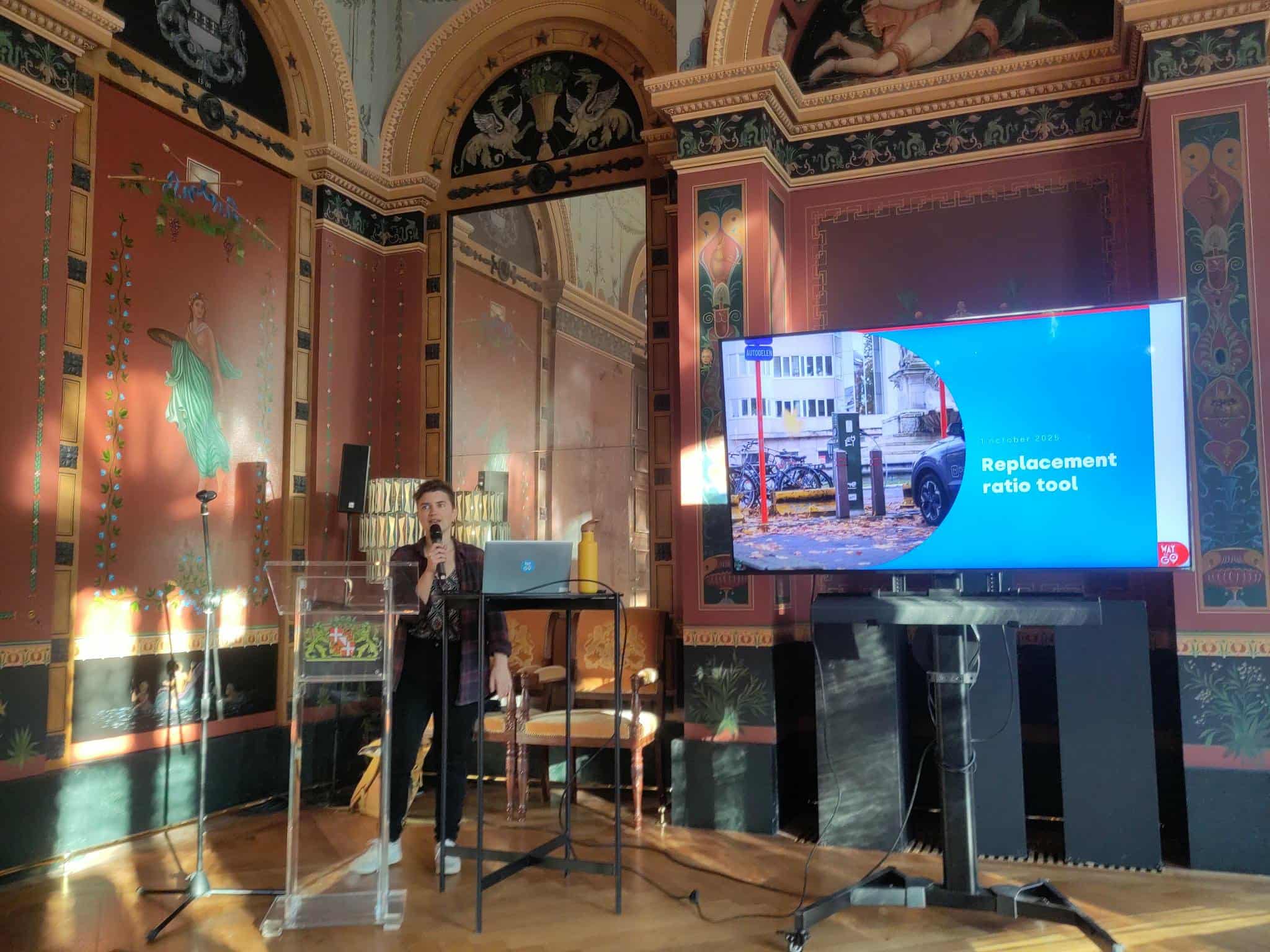
Esther De Reys (Way To Go) giving an update on the Replacement Ratio Tool.
The City of Utrecht then introduced its ‘parkeerreis auto’ (parking trip car) tool, which helps to determine the number of parking spaces required at a housing development site. The model is currently being expanded to include additional socio-economic factors, including demographics, local amenities, and available mobility options.
After a coffee break, the participants split into two groups for workshops. The first focused on making shared mobility more inclusive, exploring topics like social tariffs (led by Way To Go and the City of Utrecht). The second workshop delved into cooperative and community-based models and was hosted by the City of Utrecht, Mpact, and Institut Paris Région.
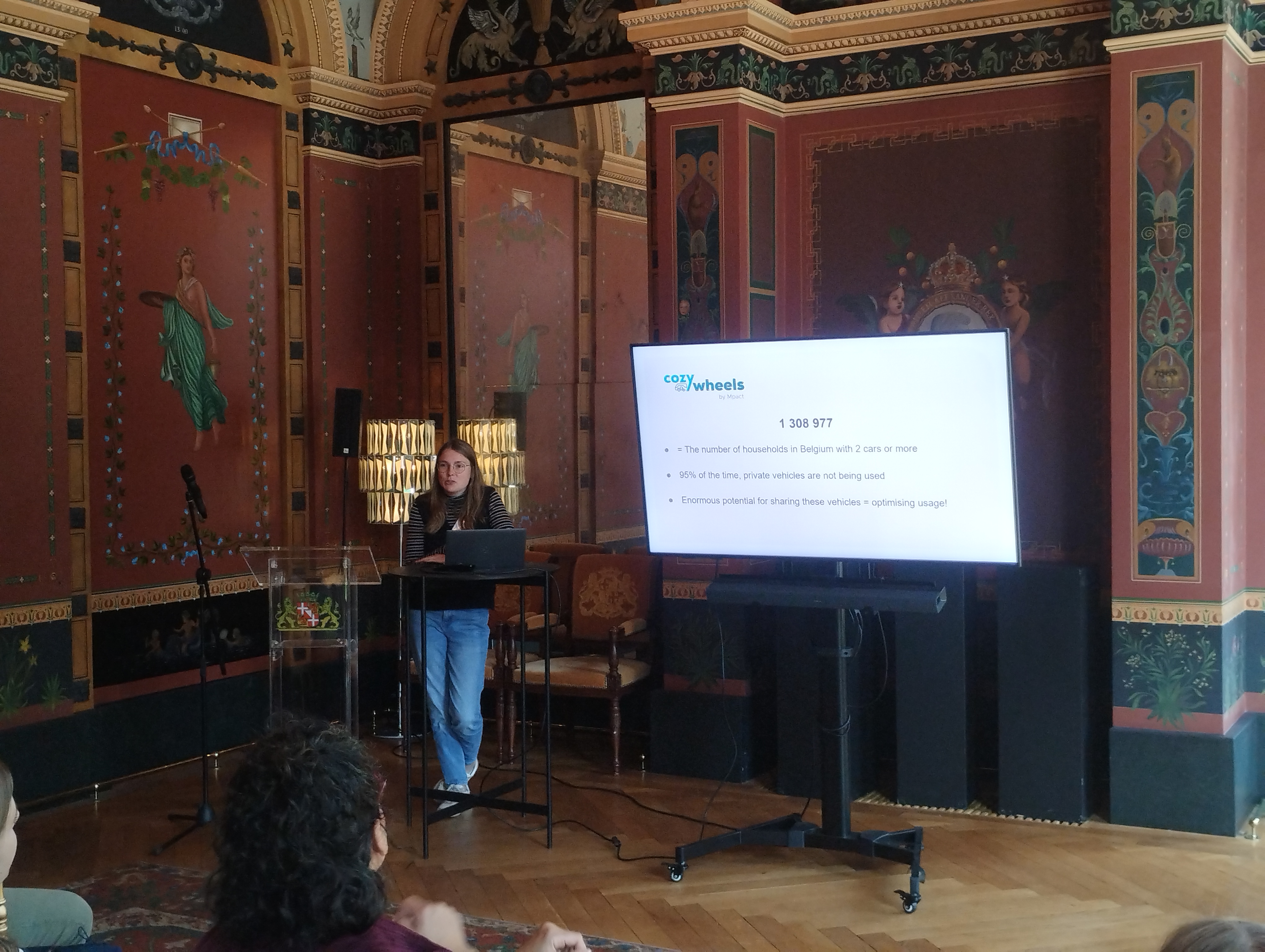
Eva Missinne introduced Mpact's peer-to-peer vehicle sharing service, Cozywheels, operating in the whole of Belgium...
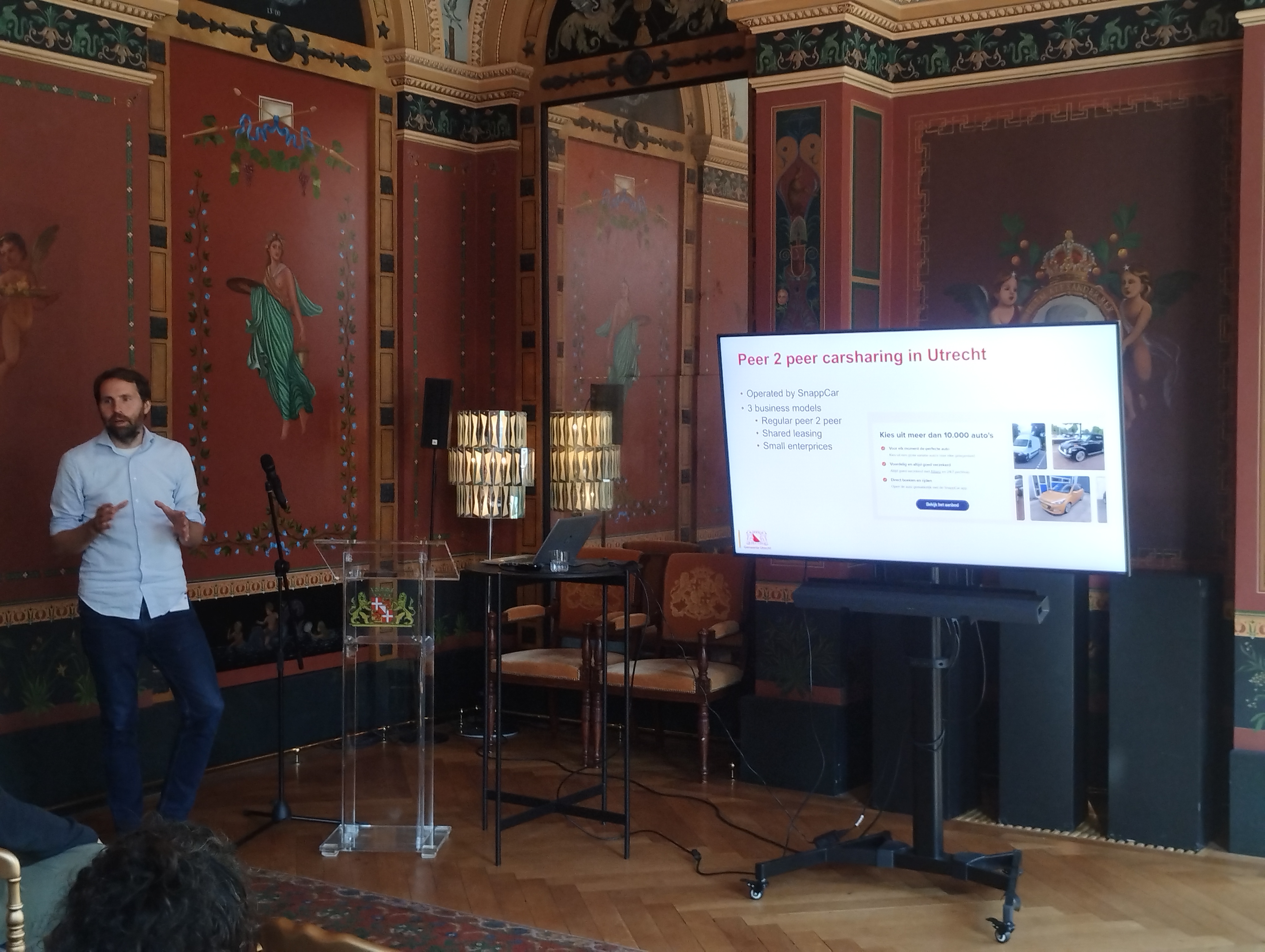
And Nick Knoester informed the audience about peer-to-peer initiatives in the City of Utrecht.
Open the gates!
In the afternoon, we opened the doors of Paushuize to the public for the Living on the Edge symposium. Maarten Markus from AM Gebiedsontwikkeling moderated the plenary session.
Cornelia Cordes (City of Bremen) introduced the SHARE-North Squared project, explaining the importance of integrating shared mobility solutions into social housing and outlining the project’s goals.
Kristof Penders (Woonland Social Housing) then provided some practical insights into the project by showcasing how Mechelen has successfully implemented shared mobility solutions in its social housing projects.
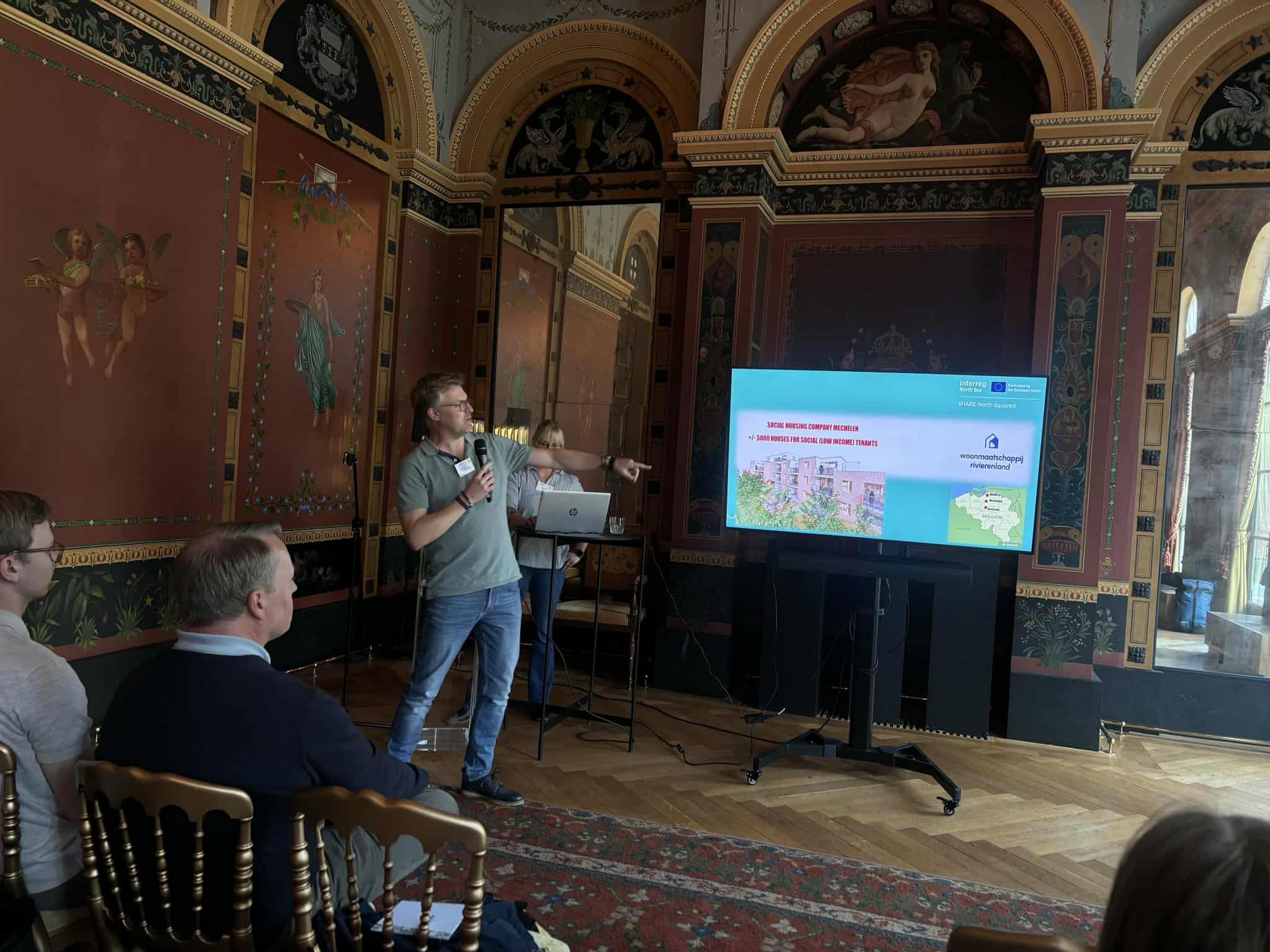
Kristof Penders (Woonland Social Housing) sharing insights from the pilot projects in Mechelen, Flanders.
Karst Geurs (University of Twente) followed with an introduction to the DREAMS project. This research-focused initiative funded by the Driving Urban Transitions partnership, aims to create accessible 15-minute cities. The project explores the impact of shared mobility and on-demand services in urban outskirts, and tests new business and governance models.
The research is conducted across six living labs: Brussels, Utrecht, Paris, Budapest, Vienna, and Munich.
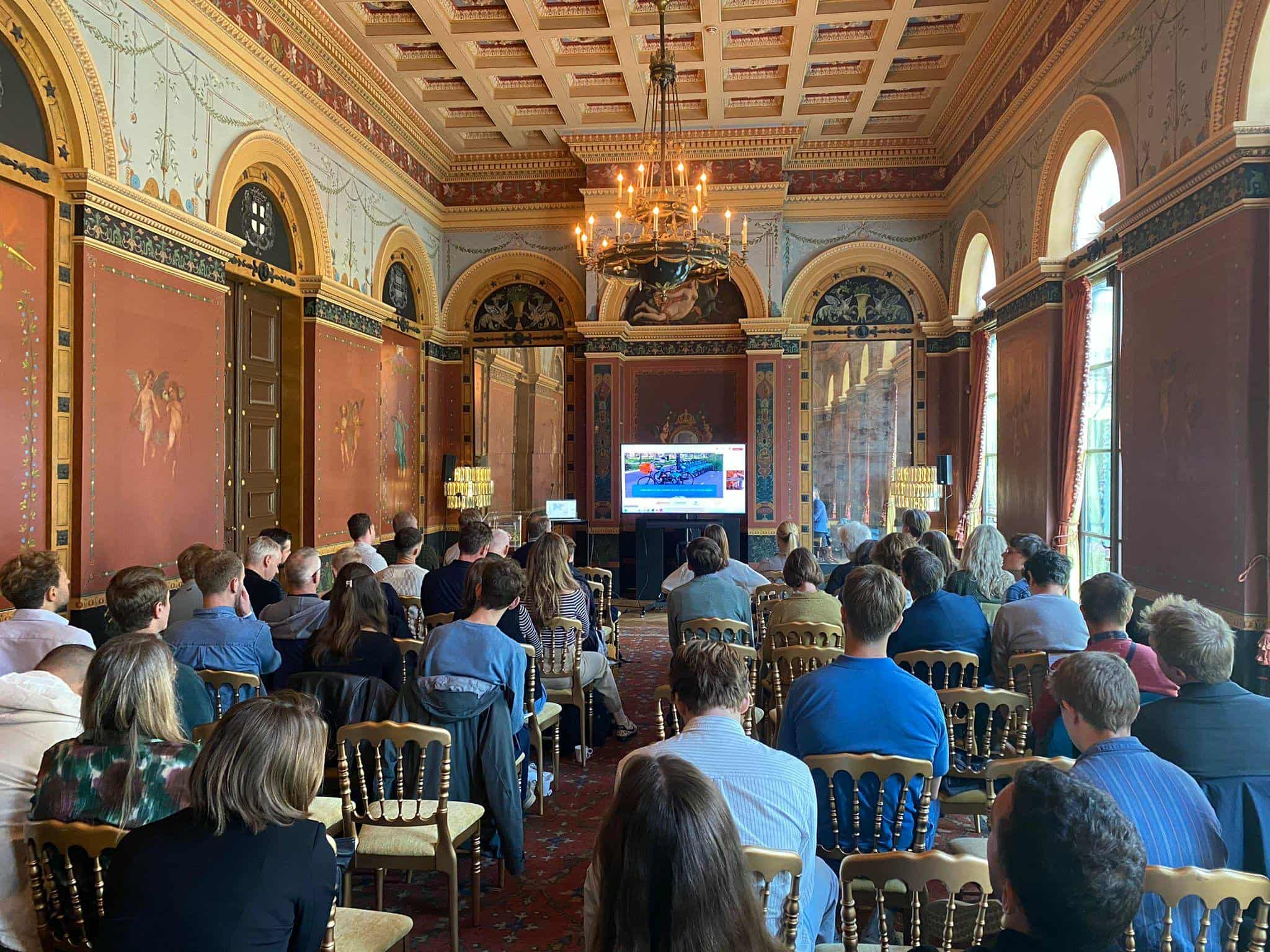
A full (Paus)house ready to learn more about SN², DREAMS and mobility in the City of Utrecht!
Liselotte Bingen from the City of Utrecht then shared insights into Utrecht’s mobility and spatial planning. Although Utrecht is a compact city, it is rapidly expanding. Historically, urban design prioritised cars, but in recent decades, the city has undergone a paradigm shift.
As Bingen summarized, “The best mobility policy is a spatial policy.” Utrecht now focuses on becoming a 10-minute city, ensuring residents can access essential services within a 10-minute walk or bike ride.
Sven Huysmans (The New Drive) joined online to discuss the development of a bike-sharing network across Utrecht Province. By analysing public transport networks, residential areas, employment hubs, and recreational sites, The New Drive created a network prototype and pricing models for bike, moped, and cargo bike-sharing systems.
Based on these insights, a province-wide bike-sharing network is set to launch by 2029.
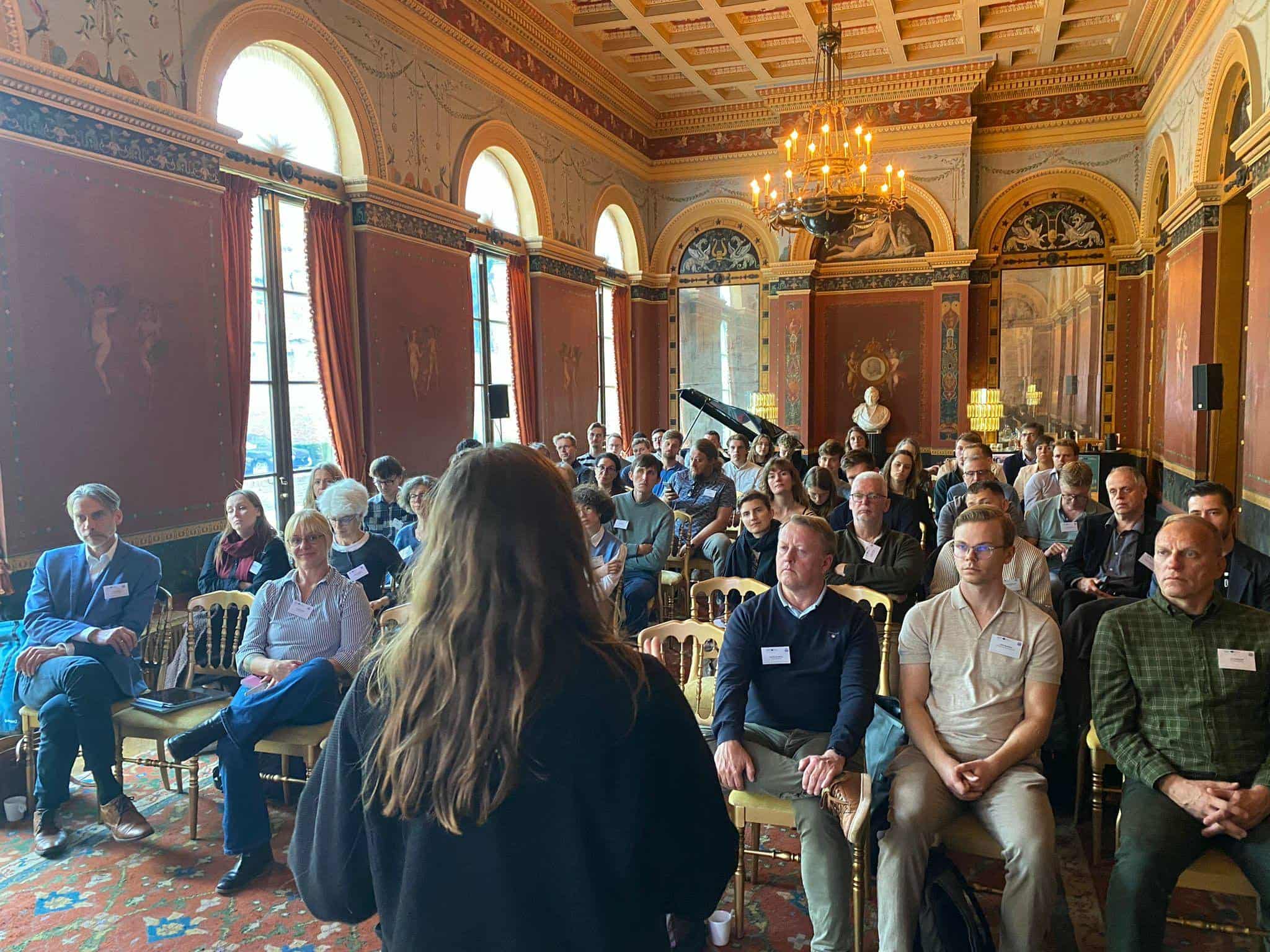
The audience listened carefully to Liselotte Bingen (City of Utrecht)
Finally, Niek Verlaan from the City of Utrecht addressed transport poverty in Utrecht. He showcased that 16% of Utrecht’s residents face difficulties in reaching essential destinations such as work, school, healthcare, and supermarkets. This issue is particularly acute in disadvantaged neighbourhoods like Overvecht, highlighting a clear link between socioeconomic deprivation and transport poverty.
To tackle this, policymakers can apply the 5 B-model - which works better in Dutch than in English: Bereikbaarheid (accessibility), Beschikbaarheid (availability), Begrijpbaarheid (understandability), Betaalbaarheid (affordability), and Bruikbaarheid (usability). By taking the 5 B's into account, mobility can become more accessible, especially for people facing mobility poverty.
From theory to practice
After the theoretical sessions, participants engaged in interactive workshops focused on four key topics:
Business Models for Shared Mobility in Urban Outskirts (led by Hogeschool Utrecht and DREAMS), exploring public-private partnerships;
The Decision Support Tool, developed by TU Munich (DREAMS), which creates accessibility maps based on policy goals and user demographics;
The Mobility Exploitation Fund, where Stadskwadraat facilitated a discussion on responsibility for mobility in new development areas;
Engaging with Target Groups, a session led by the City of Utrecht, with a focus on bike-related initiatives.
Have a look at the slideshow below to see the participants at work!
Thank you, Dankjewel!
Through collaboration and knowledge sharing, we took another step — however small — toward realising our dreams of more parcs, and less parking.
We extend our heartfelt gratitude to the DREAMS project, speakers, and all participants of the Living on the Edge symposium for helping turn our shared dreams into reality!
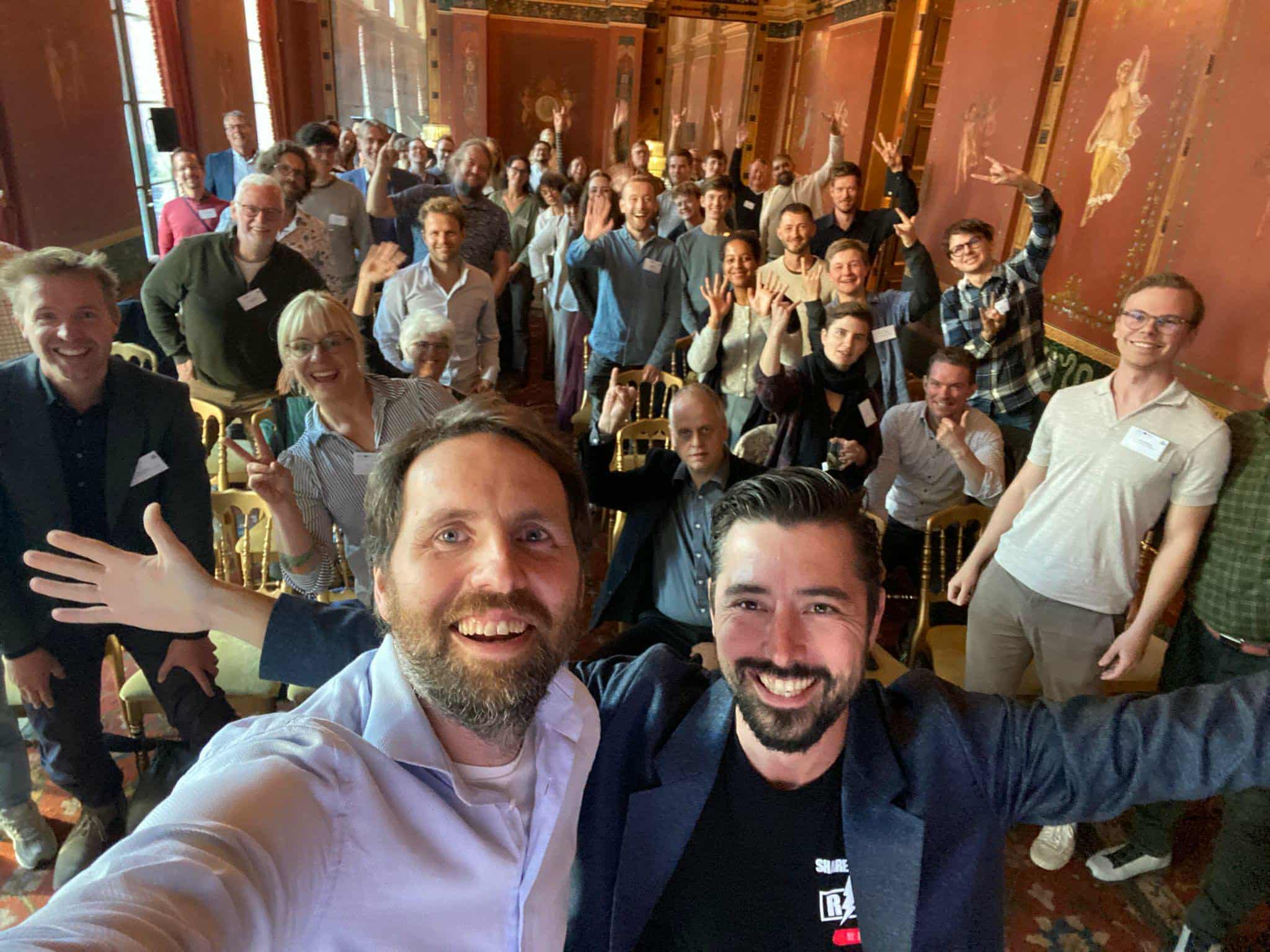
Happy faces at the end of the Symposium!
The SHARE-North Squared project wants to thank Nick Knoester (City of Utrecht) for organising the symposium and Maarten Markus (AM Gebiedsontwikkeling) for moderating the Plenary session.
Written by Jelten Baguet (Mpact)
Pictures by the SN² project, unless stated differently.
